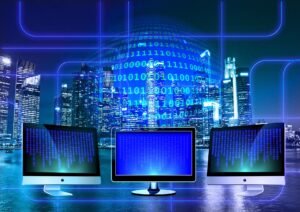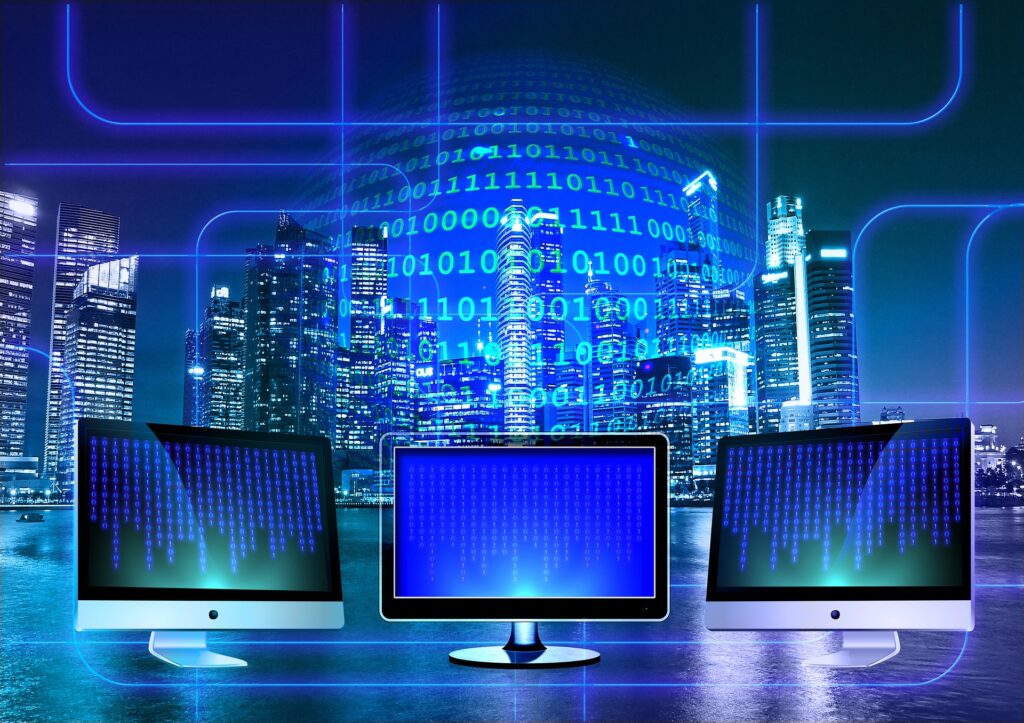Virtual Reality (VR) and Augmented Reality (AR) have come a long way from being niche technologies to driving innovation across various industries. These immersive technologies are transforming how we work, play, learn, and interact with the world. In this article, we will explore the emerging trends in VR and AR, from advancements in hardware and software to the transformative applications that are shaping the future of these immersive technologies.

Table of Contents
- Introduction
- Understanding VR and AR
-
- 2.1 Virtual Reality (VR)
- 2.2 Augmented Reality (AR)
- 2.3 Mixed Reality (MR)
- Advancements in Hardware
-
- 3.1 Headsets and Displays
- 3.2 Input Devices
- 3.3 Processing Power

- Immersive Content and Applications
-
- 4.1 Gaming and Entertainment
- 4.2 Education and Training
- 4.3 Healthcare and Therapy
- 4.4 Enterprise and Remote Work
- 4.5 Retail and Marketing
- Emerging Trends
-
- 5.1 Social VR and AR
- 5.2 5G Connectivity
- 5.3 Immersive Realism and Haptics
- 5.4 AI and Machine Learning Integration
- 5.5 Accessibility and Inclusivity

- Challenges and Considerations
-
- 6.1 Privacy and Data Security
- 6.2 Content Moderation
- 6.3 Physical and Mental Health
- The Future of VR and AR
- Conclusion
- Introduction
Virtual Reality (VR) and Augmented Reality (AR) have evolved from sci-fi concepts to mainstream technologies with a wide range of applications. They are changing the way we interact with digital information and the physical world, creating immersive experiences that blend the virtual and real. This article explores the latest trends and developments in VR and AR, showcasing their transformative potential.

- Understanding VR and AR
2.1 Virtual Reality (VR)
VR creates fully immersive digital environments that users can interact with using specialized headsets and controllers. These environments can be entirely computer-generated or based on real-world locations and scenarios.
2.2 Augmented Reality (AR)
AR overlays digital information, such as graphics, audio, or haptic feedback, onto the real world. AR is typically experienced through devices like smartphones, smart glasses, or AR headsets.
2.3 Mixed Reality (MR)
Mixed Reality (MR) combines elements of both VR and AR, allowing digital and physical objects to interact and coexist in real time. MR aims to create seamless integrations of digital content into the physical world.
- Advancements in Hardware
3.1 Headsets and Displays
The development of lighter, more comfortable, and higher-resolution headsets is making VR and AR more accessible and immersive. Companies are pushing the boundaries of display technology to reduce the “screen door effect” and improve field-of-view.

3.2 Input Devices
Advanced input devices like hand tracking, gesture recognition, and haptic feedback controllers are enhancing the sense of presence in VR and AR experiences. These devices enable more natural interactions within virtual environments.
3.3 Processing Power
The demand for real-time rendering and complex simulations requires powerful GPUs and processors. Advances in processing power are driving more realistic and responsive VR and AR experiences.
- Immersive Content and Applications
4.1 Gaming and Entertainment
VR and AR are redefining gaming and entertainment. From VR gaming experiences that transport players to fantastical worlds to AR apps that gamify everyday activities, these technologies are reshaping the entertainment industry.

4.2 Education and Training
VR and AR offer immersive educational experiences, enabling students to explore historical sites, conduct virtual experiments, and participate in realistic training simulations for industries like aviation, healthcare, and military.
4.3 Healthcare and Therapy
In healthcare, VR is used for pain management, exposure therapy, and surgical training. AR is assisting surgeons with real-time data during procedures and aiding in medical imaging and diagnostics.
4.4 Enterprise and Remote Work
VR and AR are improving remote collaboration by providing virtual meeting spaces and enabling remote workers to interact as if they were in the same room. Businesses are also using AR for product design, maintenance, and customer support.
4.5 Retail and Marketing
Retailers are leveraging AR for virtual try-ons, interactive in-store displays, and location-based promotions. AR is enhancing marketing campaigns by enabling customers to interact with branded content.

- Emerging Trends
5.1 Social VR and AR
Social platforms are adopting VR and AR for virtual gatherings, events, and conferences. These technologies are enhancing social interactions by allowing users to communicate in immersive environments.
5.2 5G Connectivity
The rollout of 5G networks is expected to significantly improve the streaming and real-time capabilities of VR and AR, enabling high-quality, low-latency experiences.
5.3 Immersive Realism and Haptics
Advancements in haptic feedback technology are enhancing the sense of touch in VR and AR. Realistic tactile sensations are crucial for applications like medical training and virtual therapy.
5.4 AI and Machine Learning Integration
AI is being integrated into VR and AR to create dynamic, adaptive experiences. AI-driven content generation, voice recognition, and behavior prediction are enhancing immersion.
5.5 Accessibility and Inclusivity
Efforts are underway to make VR and AR more accessible to individuals with disabilities. This includes developing adaptive controllers, improving voice commands, and enhancing visual and auditory feedback.

- Challenges and Considerations
6.1 Privacy and Data Security
As VR and AR gather more personal data, privacy concerns are growing. Protecting user data and ensuring secure interactions are paramount.
6.2 Content Moderation
Ensuring appropriate content in social VR and AR spaces is challenging. Effective content moderation mechanisms are needed to prevent harassment and inappropriate behavior.
6.3 Physical and Mental Health
Long-term use of VR and AR can have physical and mental health implications, including motion sickness, eye strain, and addiction. These issues require ongoing research and mitigation strategies.
- The Future of VR and AR
The future of VR and AR holds promise for even more immersive experiences, increased adoption across industries, and greater accessibility. However, addressing ethical, privacy, and health concerns will be crucial for responsible development and deployment.
- Conclusion
VR and AR are reshaping the way we interact with digital and physical worlds. The emerging trends in these technologies promise to revolutionize industries, enhance education and training, and connect people in new and innovative ways. As VR and AR continue to evolve, responsible development, ethical considerations, and user well-being should remain at the forefront of their advancement.



